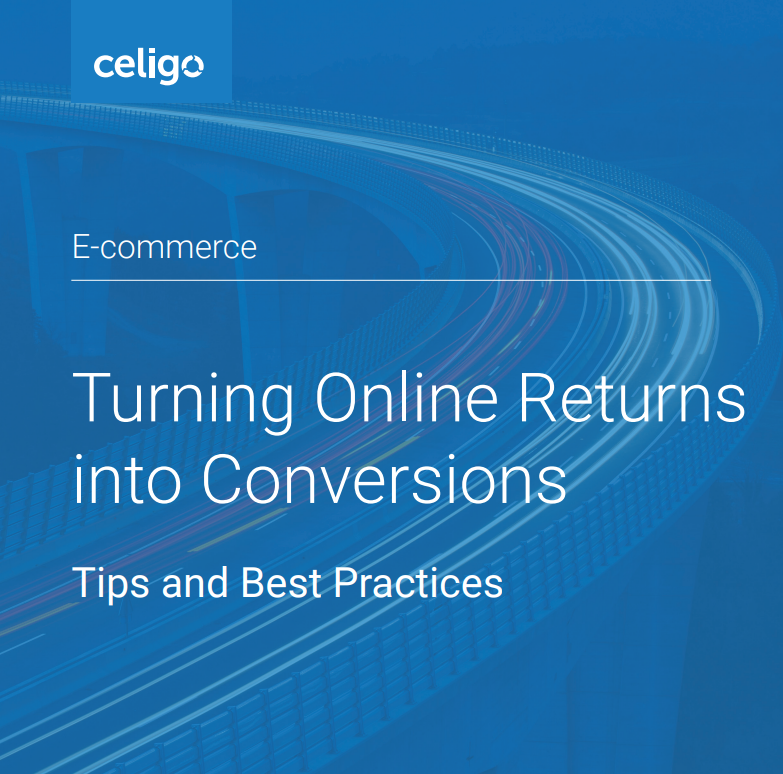
Product returns are normal part of running a retail business. Traditional brick and mortar stores average between nine and ten percent returns. The return rate for online purchases averages at 20% and during the holidays it can surge to 30% and 50% in some categories. By 2020, e-commerce returns are expected to cost retailers over $550 billion.
Online merchants however can use returns as a way to increase conversions, build customer loyalty, and differentiate from competitors. Additionally, merchants are under pressure to meet buyer expectations created by the Amazon experience in which buyers are offered a seamless and convenient process to return any purchases.
A key to making returns an asset rather than a liability to an e-commerce business is to integrate all the key systems that run an e-commerce business - such as online storefronts, order management, fulfillment, financial, and customer call center systems. Without such an integration, data becomes difficult to collect and act upon, and it becomes impossible to programmatically offer incentives and drive behavior to not just reduce returns but to convert returns into new purchases.
Mitigating Returns Upfront
The best method of reducing returns is to prevent returns. This means that data on returns, based on SKU, product attribute, customer demographics, time, and other insights, needs to be collected and analyzed. If the data can be used on the fly based on a shopper’s behavior while visiting the website, the effectiveness can be dramatic.
An apparel company reduced their returns rate by more than 50%. Based on shopper behavior, they made sizing and fit information more prominent and easier to find. After conducting A/B tests, they discovered that by making the button size extra large for finding product fit and sizing, especially when prompted to select a size, resulted in reduced returns. Having an online chat box with product related prompts based on browsing activities were also effective, such as “Do you want to talk about the fit of this shirt?”
As any e-commerce manager knows, having compelling yet accurate product descriptions are critical in driving sales. Showing pictures and even videos can help entice and address questions that shoppers may have since they are not able to view or touch the physical product. Being able to serve up dynamic content based on a shopper’s browsing activity can ensure the right size or color or product type is selected during the initial purchase to help reduce returns.
360° Shopping Experience
Consumer expectations from omnichannel commerce are driving retailers to optimize the end-to-end shopping experience -- from browsing and purchasing to fulfilling, returns, and customer support. Shoppers now expect to buy whenever and wherever it is convenient for them - whether it is online, offline, or a combination of both.
As a result, they also expect the post-purchase process, including order returns, to be convenient and instant. By meeting or even exceeding customer expectations for returns, a company can build customer loyalty. In fact, some companies that cultivate positive returns process had a return purchase rate of 95% for both new and returning shoppers.
In order to deliver a seamless and timely returns process, integration between the storefront, fulfillment center, financial system, and customer support system will ensure that as soon a shopper requests a return - either via the storefront or call center - the request is then automatically sent to the different systems to trigger the processes for fulfilling, communicating, and refunding the return.
In addition to driving future sales, customers who are happy with their overall shopping experience will share it within their own networks to create organic buzz. Positive referrals help build goodwill even when it is something as mundane as returns. So rather than entirely focusing on the first two- thirds of the shopping experience, merchants need to ensure the entire experience, from browsing, purchasing, receiving, and returns, provides an optimal experience for the customers to drive repeat purchases and loyalty.
Why Returns Are Important
Statistics show that 63% of online shoppers look at the return policy before making a purchase. And 48% of customers will shop more often with an online retailer if the company has a lenient, easy to- understand policy. One of the most effective return policies emerging has been lenient returns, increasing sales as much as 350%.
Research also shows that the more lenient the return policy, the less likely shoppers will actually make a return. For example, a 90-day return window may lead to less returns than a 30-day one since buyers may become more attached to the product or else may forget about the product altogether.
Not only is it important to drive actual purchases, but a carefully thought out returns policies can become a key differentiator. For example, Nordstrom has a policy which states returns are handled on a case-by-case basis with the ultimate objective of satisfying the customer. Instead of framing the language around what Nordstrom will or will not do for a customer, they use the policy as an opportunity to show how much they value their customers’ business.
Contact Us for E-commerce: Turning Online Return into Conversions with Celigo into your Business.
Copyright © 2025 - Custom Software Solutions, Inc.







